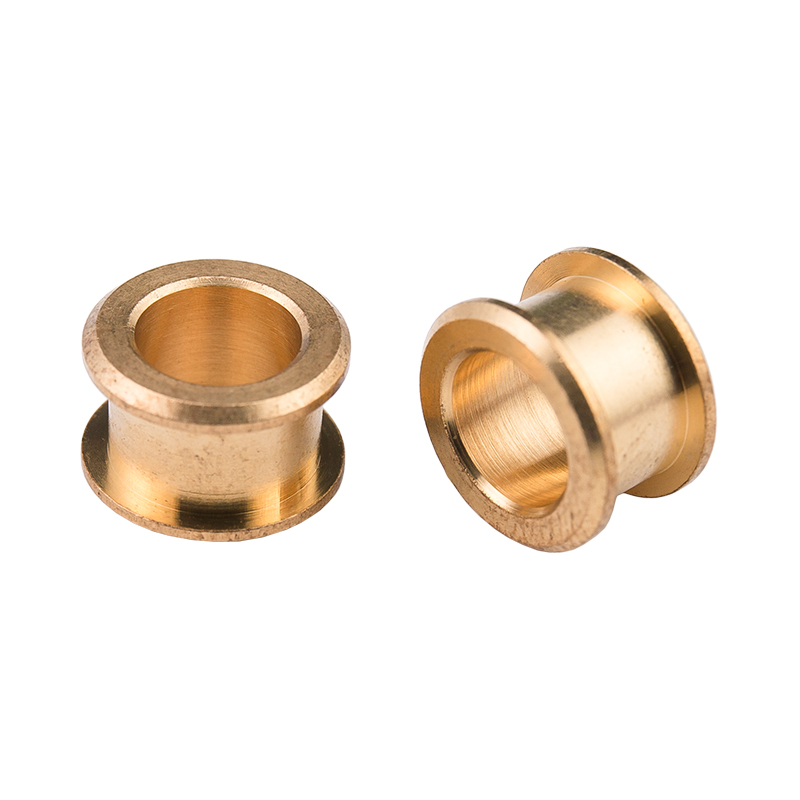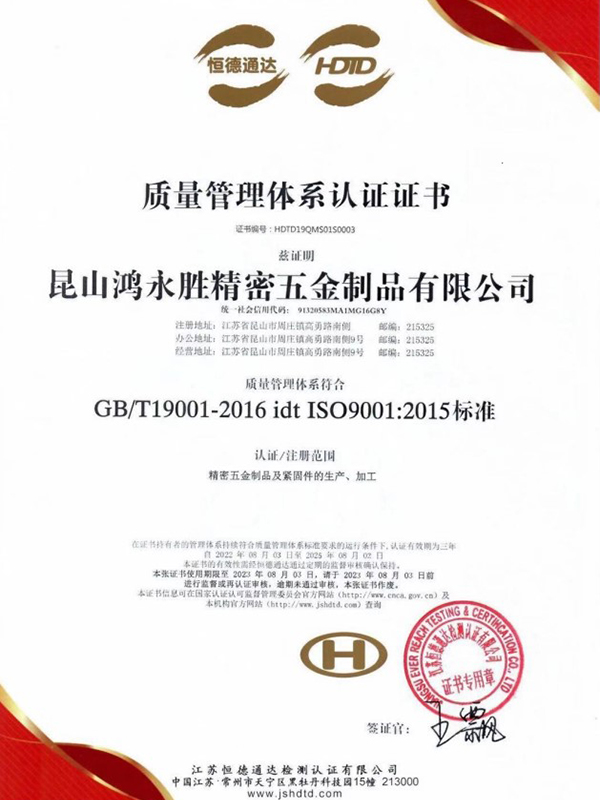Carbon Steel Bolt Supplier Guide: What Buyers Should Look For Selecting the right supplier for carbon steel bolts affects product performance, safety, and long-term cost. This guide breaks down the p...
READ MOREThe company has obtained two quality system management certificates of ISO9001:2015 and IATF16949:2016.
At present, the company has been for Japan, Sweden, the United States, Singapore, Malaysia, Hong Kong and the Pearl River Delta and many other customers to provide services, now the main customers are: Japan Sharp (SHARP), Japan SMC, Japan Panasonic (Panasonic), the Swedish automobile VOVOL, etc., all the fixed assets investment of more than 30 million dollars, welcome friends from all walks of life to the factory to visit, study, consulting and come! We welcome friends from all walks of life to visit our factory, investigate, consult and come to us for sample processing.
We are looking forward to establishing a good business partnership with you with mutual trust and reciprocity!
-
-
Introduction: The Foundation of Mechanical Systems In the intricate world of modern manufacturing and engineering, machined parts form the fundamental building blocks of virtually every mechanical sys...
READ MORE -
Why Structural Integrity Matters In construction, machinery, and other industrial applications, structural integrity is crucial for safety, performance, and longevity. One of the key elements in ensur...
READ MORE -
Introduction to Stainless Steel Fasteners Stainless steel fasteners are widely used in construction, machinery, and industrial applications due to their corrosion resistance and durability. Among them...
READ MORE
What are the advantages of bronze bushings over bushings of other materials?
Compared to bushings made from other materials, bronze bushings offer several significant advantages. Here are some key points:
Self-lubricating Properties: Bronze bushings contain elements such as lead or tin, which form a lubricating film on the surface during operation. This reduces friction and wear, allowing bronze bushings to function without external lubricants. This self-lubricating capability is particularly important in environments where maintenance is difficult or where traditional lubricants cannot be used.
Excellent Wear Resistance: The hardness and wear resistance of bronze alloys generally surpass those of plastic and certain cast iron materials. Bronze bushings can maintain a low wear rate over extended periods, helping to prolong the lifespan of equipment and reduce maintenance costs.
High Load Capacity: Due to the high mechanical strength of bronze, bronze bushings can withstand substantial loads. This makes them suitable for heavily loaded mechanical components, such as bearings in automotive and industrial machinery.
Superior Thermal Conductivity: Bronze bushings have good thermal conductivity, allowing them to quickly dissipate heat generated by friction. This reduces the risk of damage due to overheating.
Corrosion Resistance: Bronze materials exhibit good resistance to various chemicals, enabling bronze bushings to be used in harsh chemical environments. This resistance is superior to that of some steel or aluminum bushings, which are more prone to corrosion.
Machinability: Bronze has excellent casting properties and can be formed into complex shapes using various casting techniques. Additionally, bronze bushings can be machined to meet high precision requirements when needed.
Environmental Adaptability: Bronze bushings can operate reliably in diverse environmental conditions, including humid and salty environments, without rusting or degrading like some other materials.
Recyclability: Bronze is a recyclable material. Bronze bushings can be recycled and reused at the end of their service life, contributing to reduced environmental impact.
These advantages make bronze bushings a preferred choice in many industrial applications, especially where high reliability and long service life are required. However, the cost of bronze bushings is generally higher than that of some other materials, such as cast iron or certain plastics, which may make them less suitable for cost-sensitive applications.
What about the noise and vibration produced by bronze bushings during operation?
Bronze bushings typically exhibit lower levels of noise and vibration during operation. Here are some specific points:
Low Friction Coefficient: Due to their self-lubricating nature, bronze bushings have a lower friction coefficient, helping to reduce heat and noise generated during motion.
Vibration Suppression: Bronze bushings can withstand high loads and have high load-carrying capacity, allowing them to effectively suppress vibration and reduce noise.
Self-Lubrication: Since bronze bushings typically possess self-lubricating properties, they can operate without external lubricants, contributing to noise and vibration reduction.
Design Principles: Design considerations include isolation frequency or dynamic stiffness, as well as damping coefficient, all of which aid in noise and vibration control.
Hydraulic Bushings: Some bronze bushings are designed as hydraulic bushings, utilizing liquid resonance and volume stiffness amplification to generate higher damping peaks, which help attenuate vibration and noise.
Material Characteristics: Material properties of bronze bushings, such as high strength and elasticity, help absorb impact and reduce vibration, thereby lowering noise.
High-Speed Rotation Performance: Bronze bushings exhibit lower vibration and noise levels than rolling bearings during high-speed rotation, making them suitable for applications requiring high-speed operation.
Structural Types: Different structural types of bronze bushings, such as double-bonded liners and damping hole liners, have characteristics for adjusting stiffness and damping, aiding in vibration and noise control.
Due to their material and design characteristics, bronze bushings provide lower levels of noise and vibration during operation, making them suitable for applications where strict noise and vibration control requirements exist.



 русский
русский Español
Español



